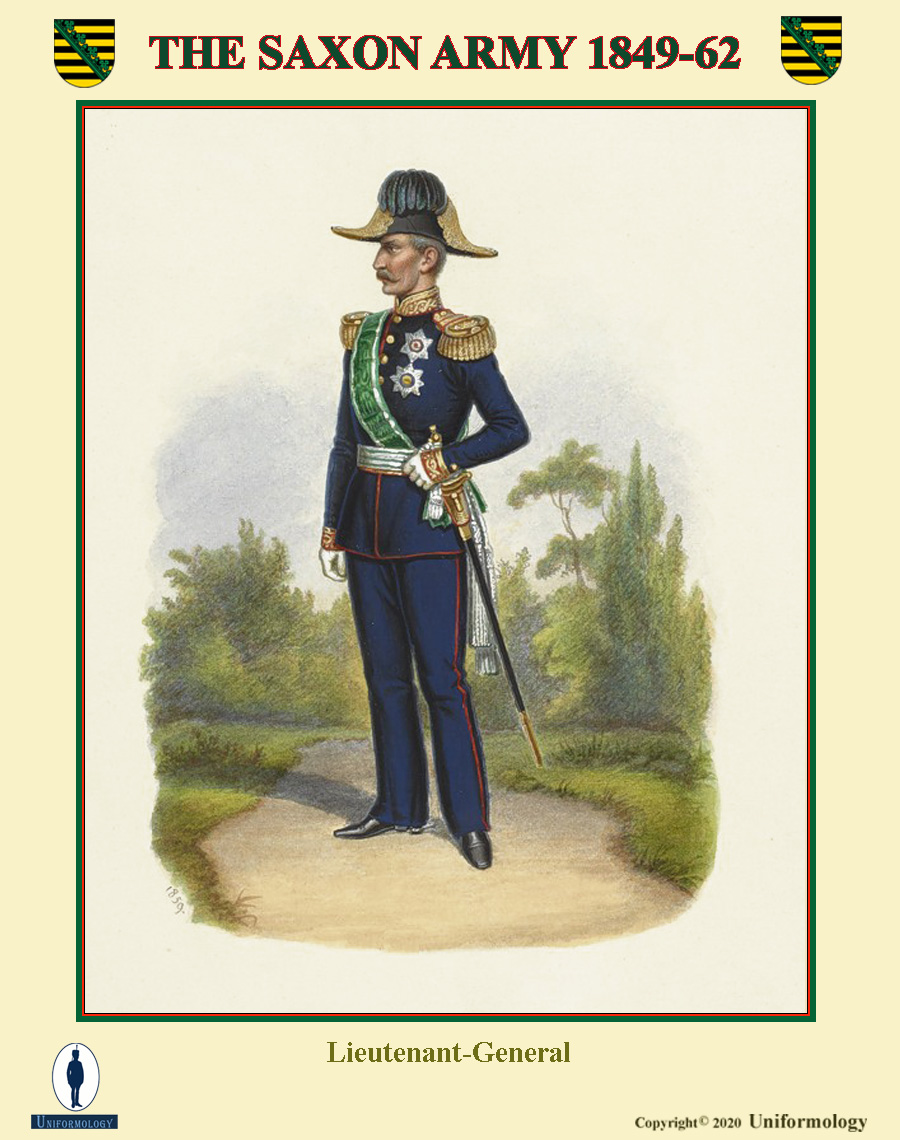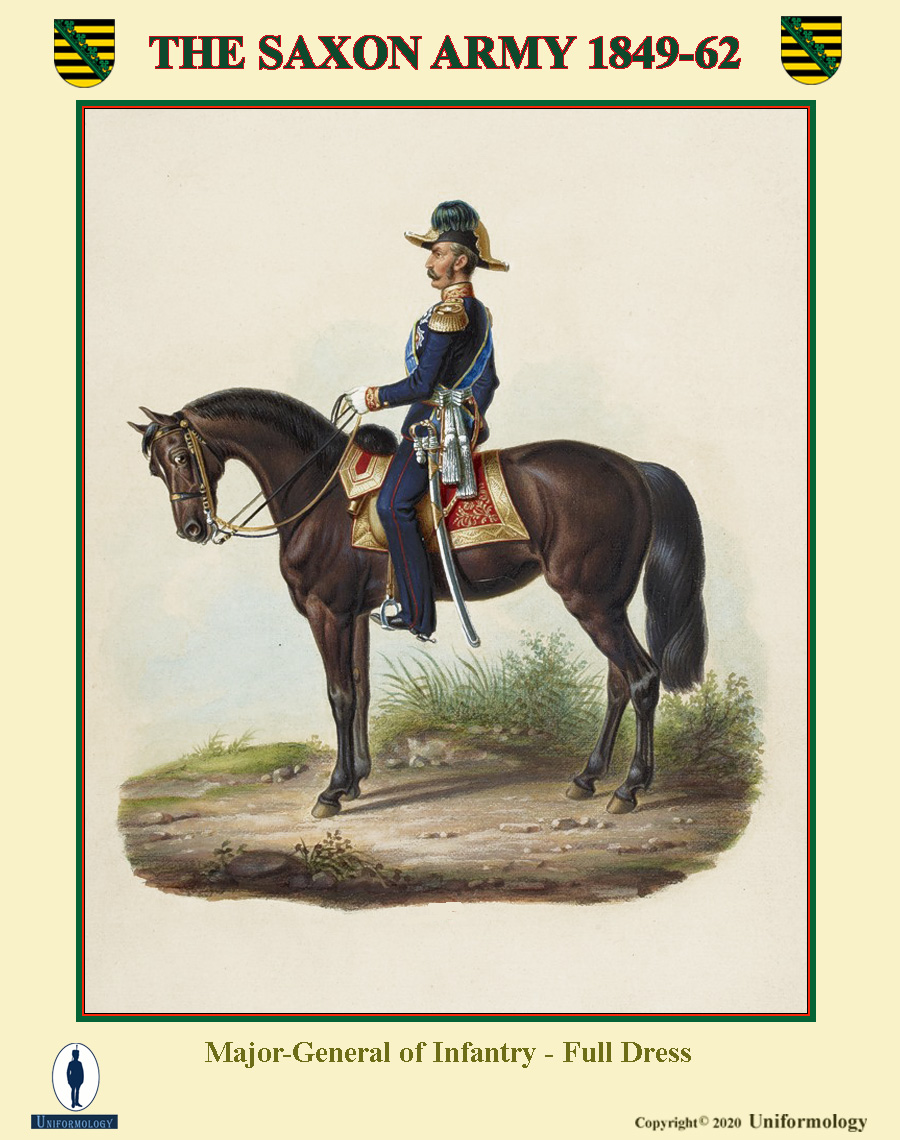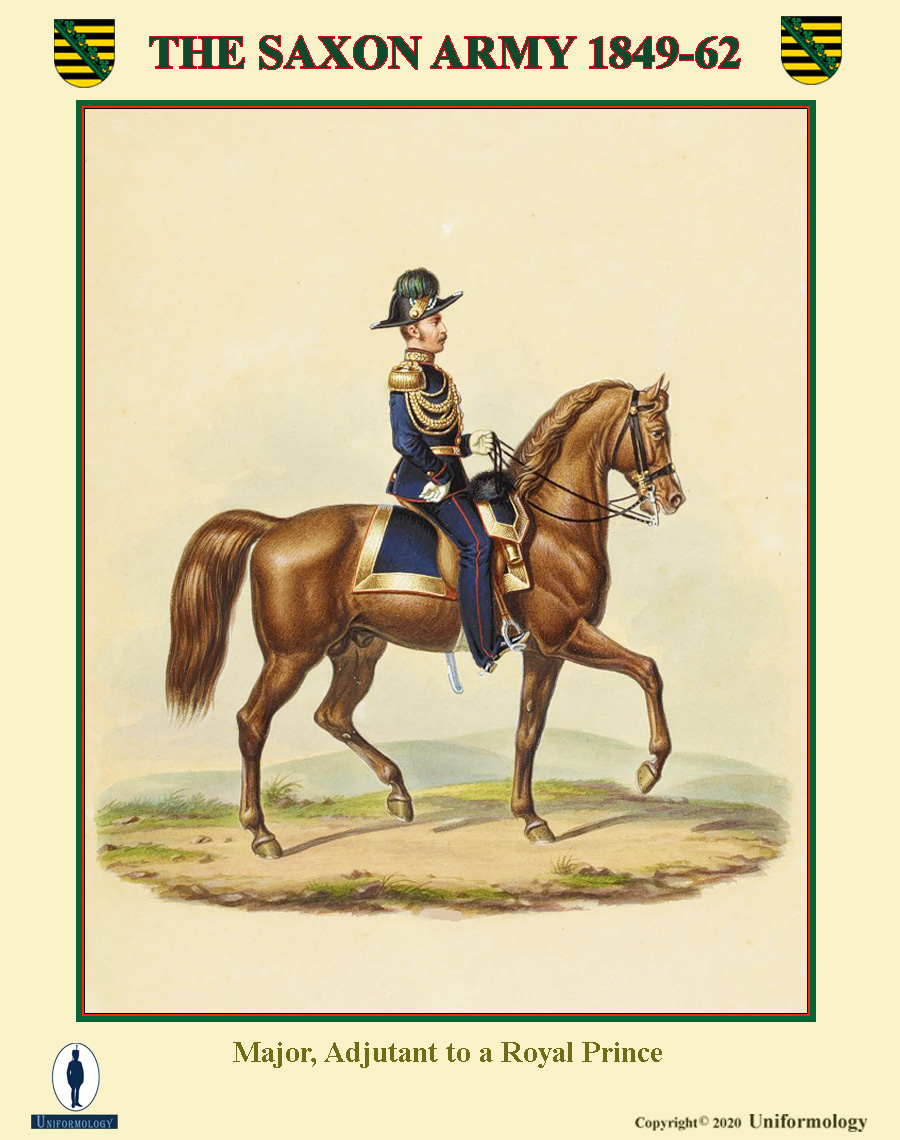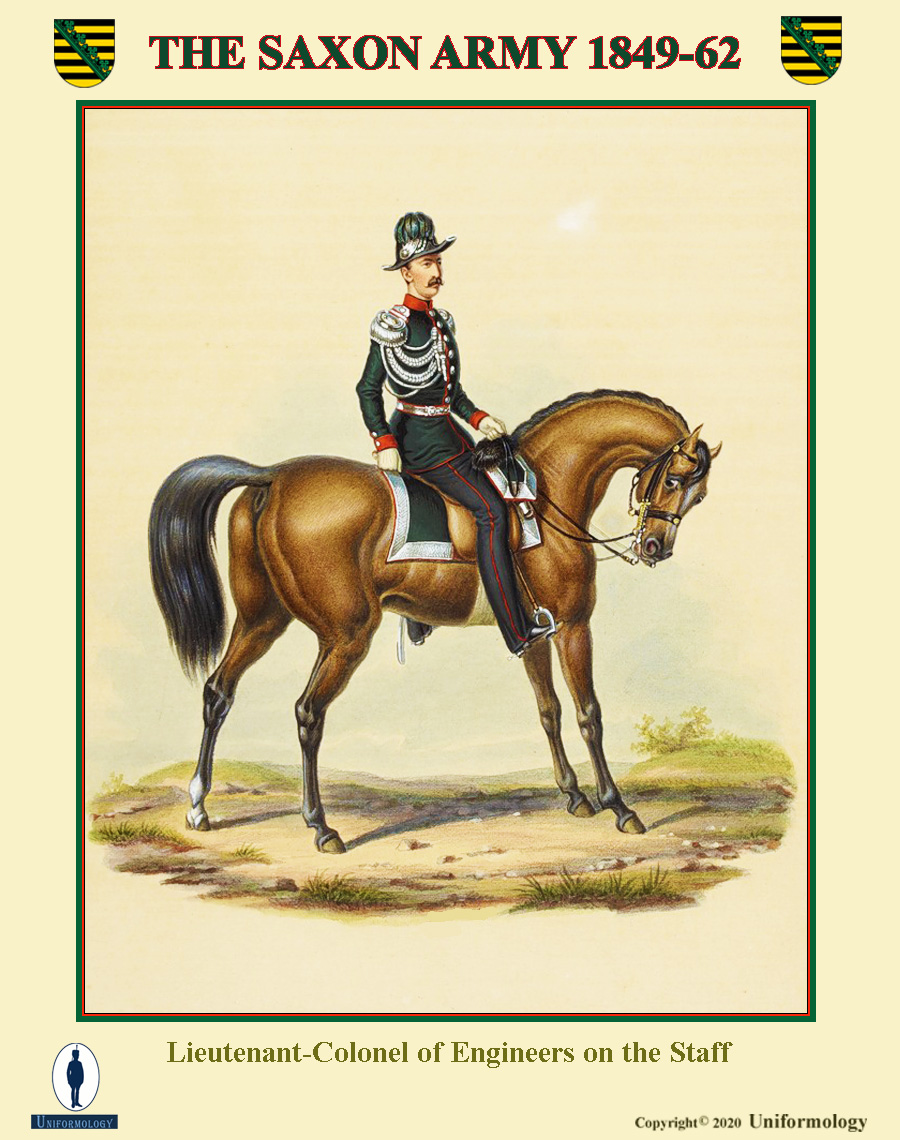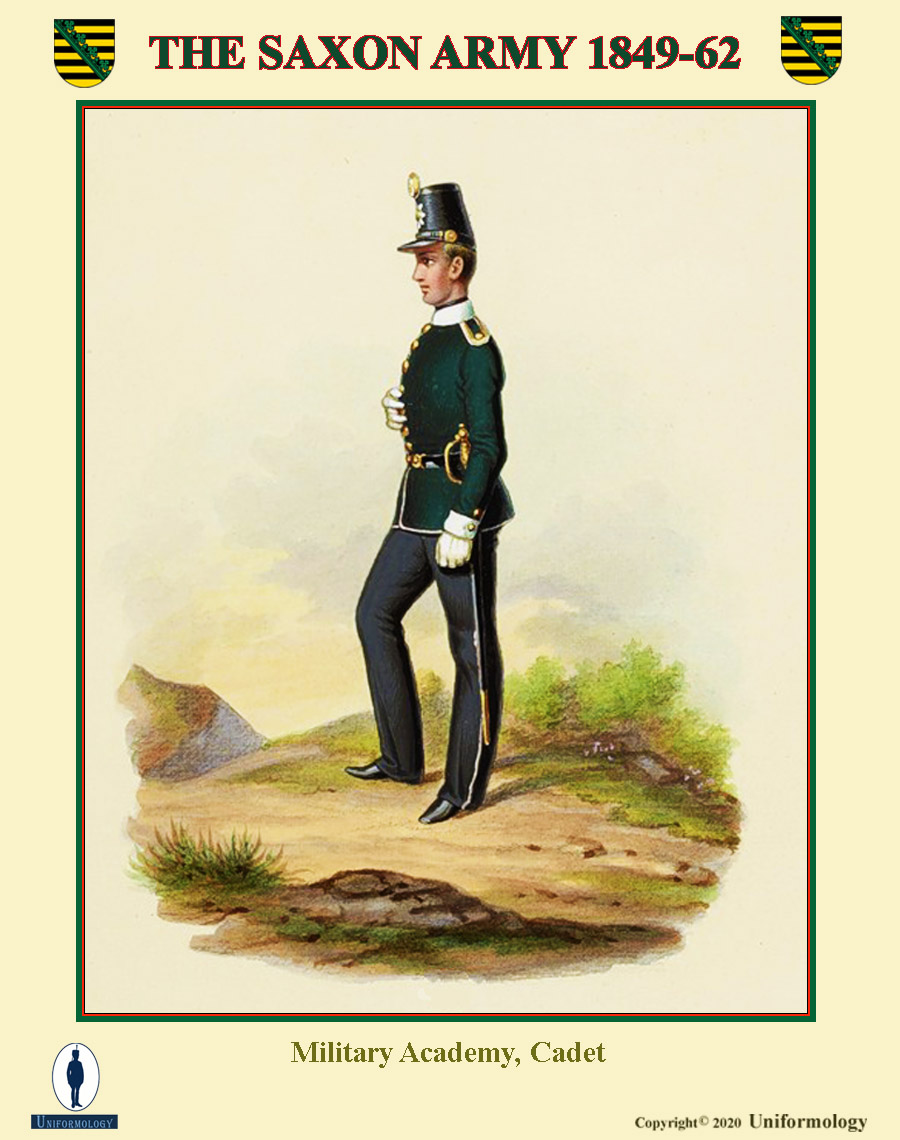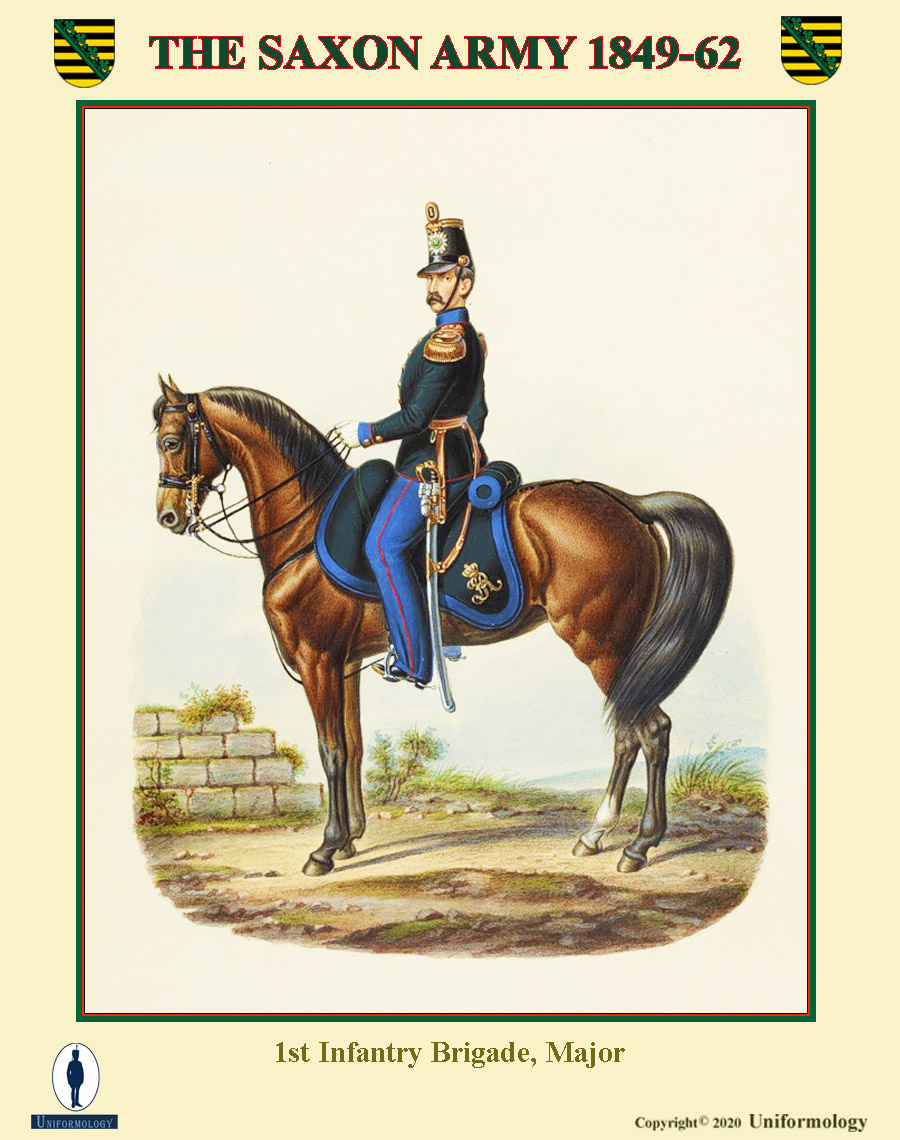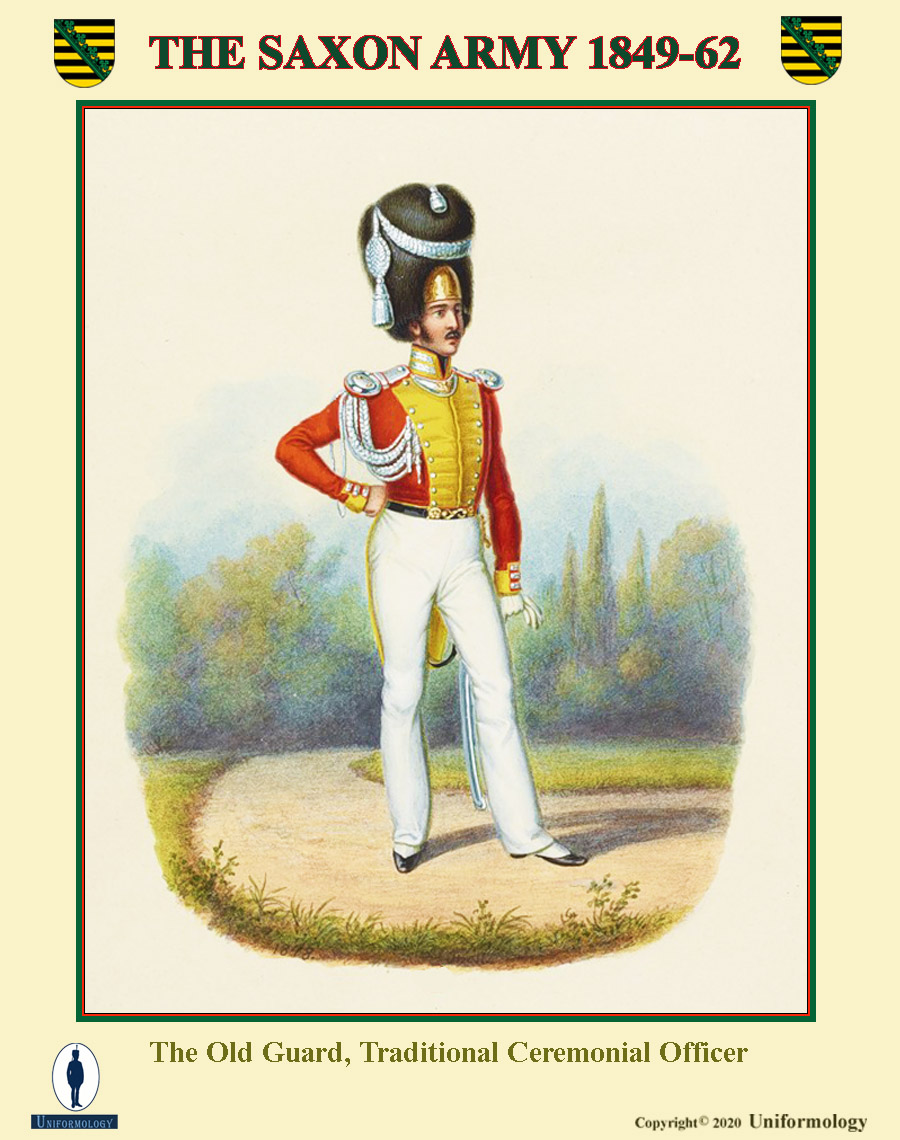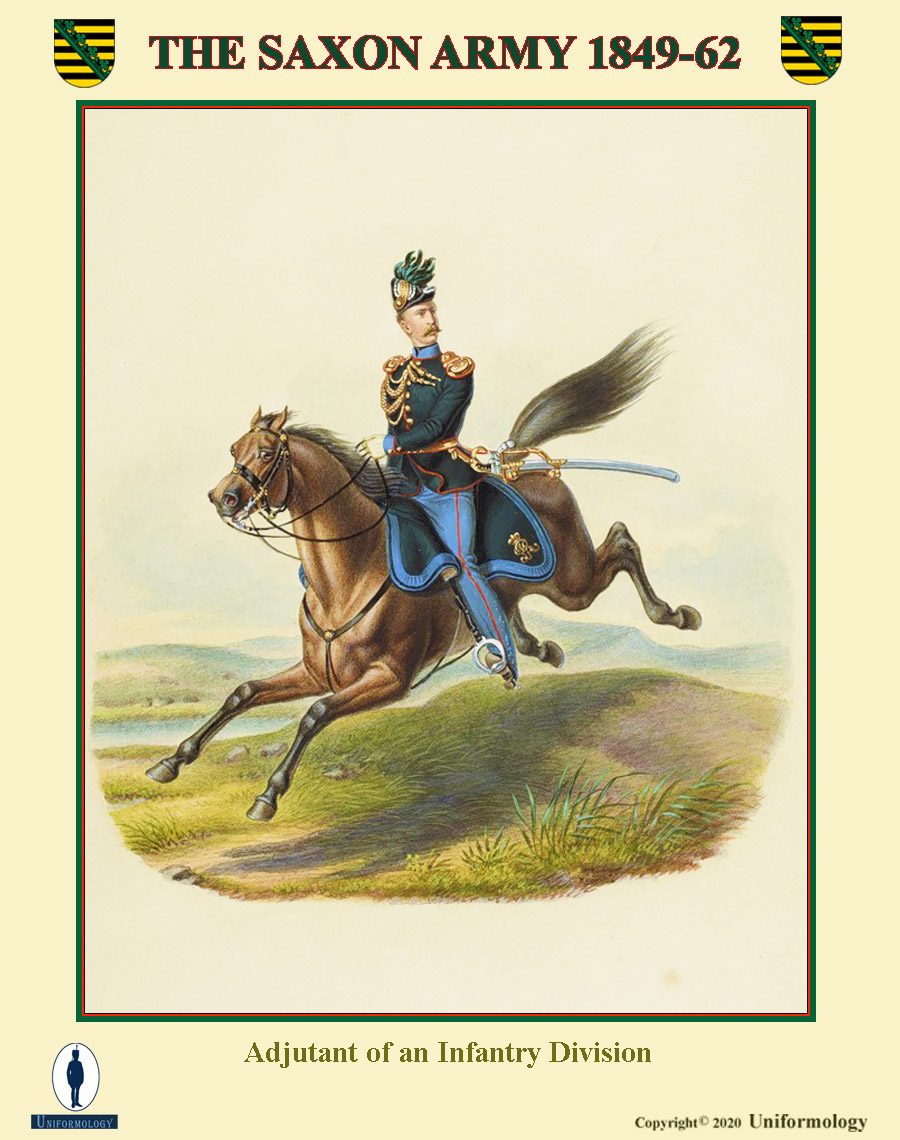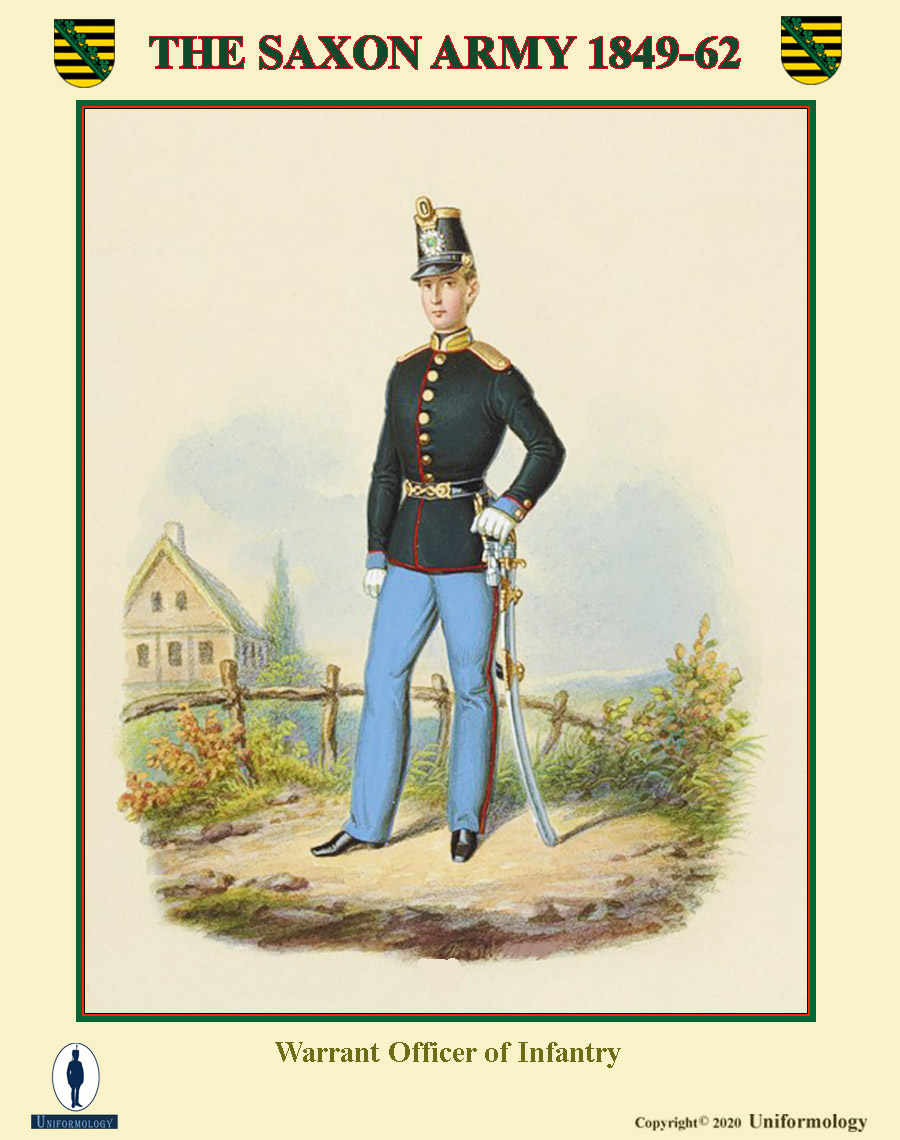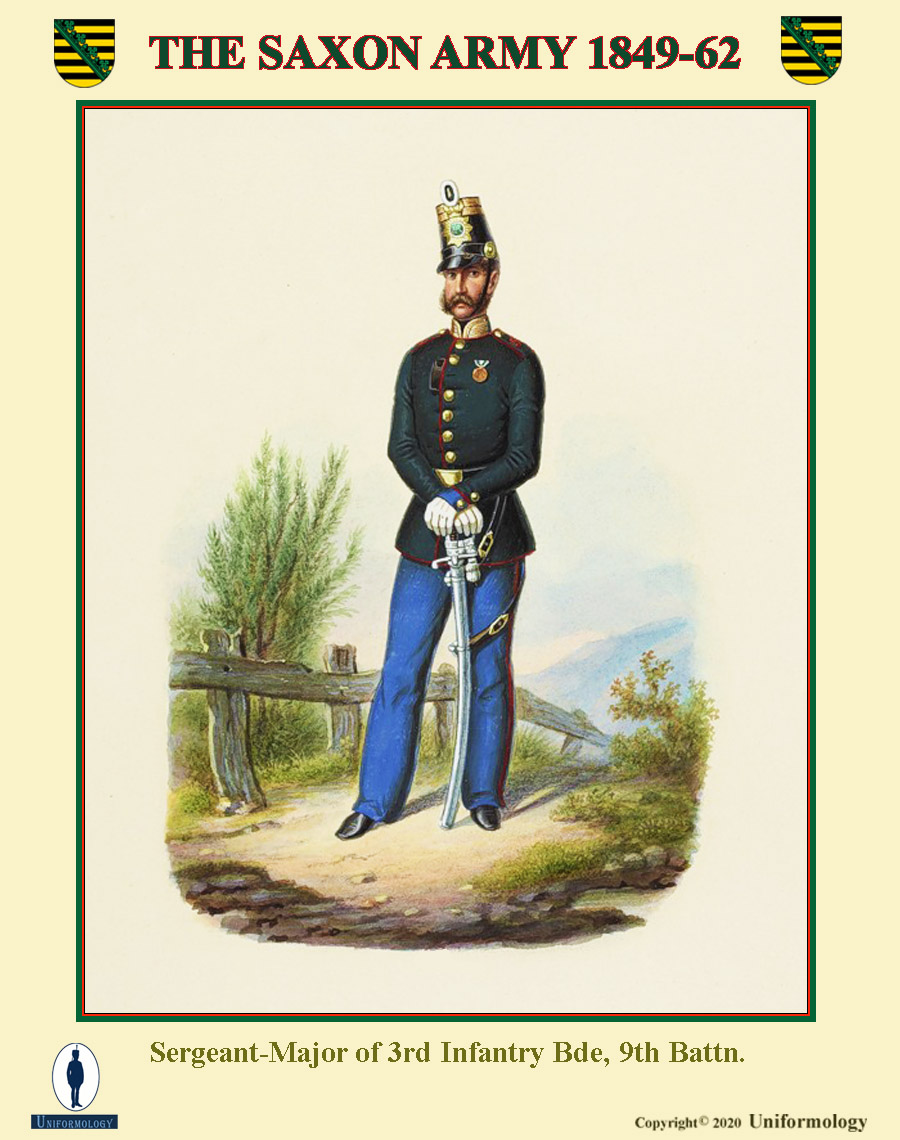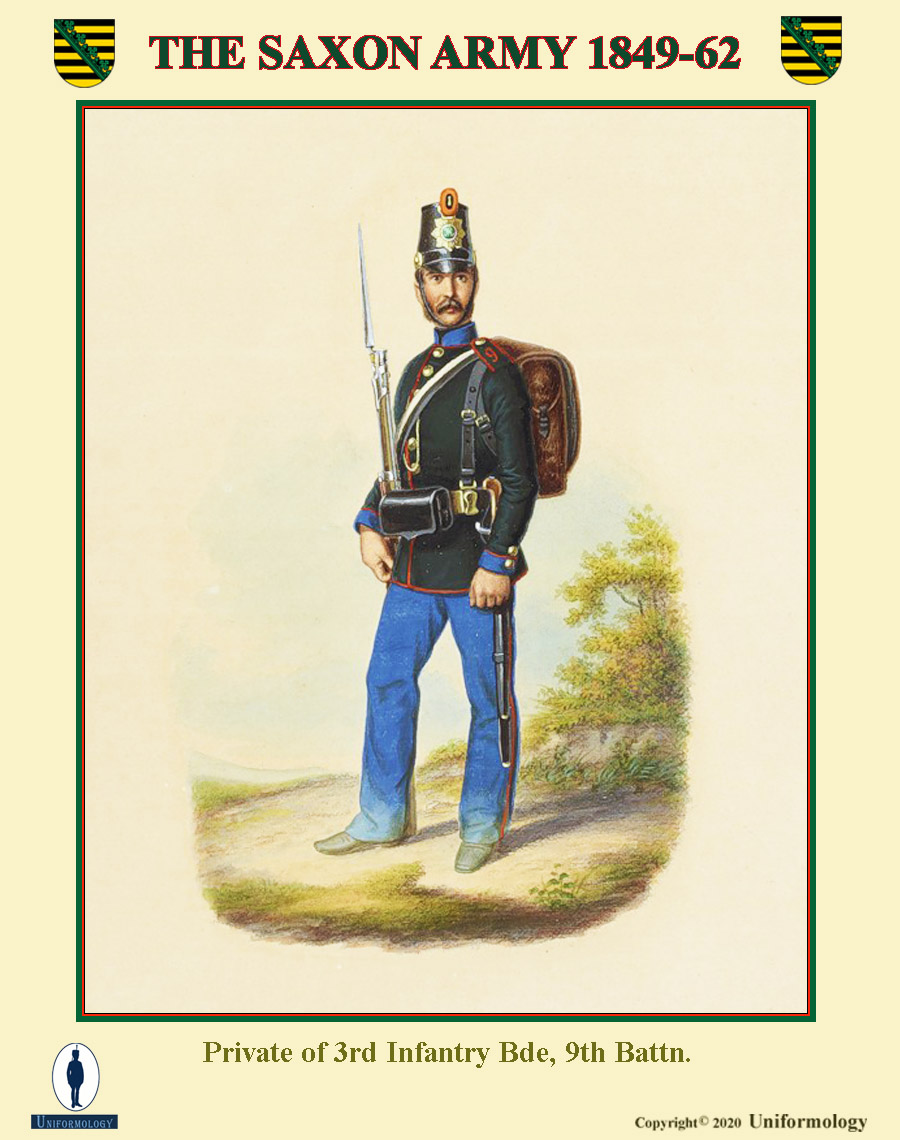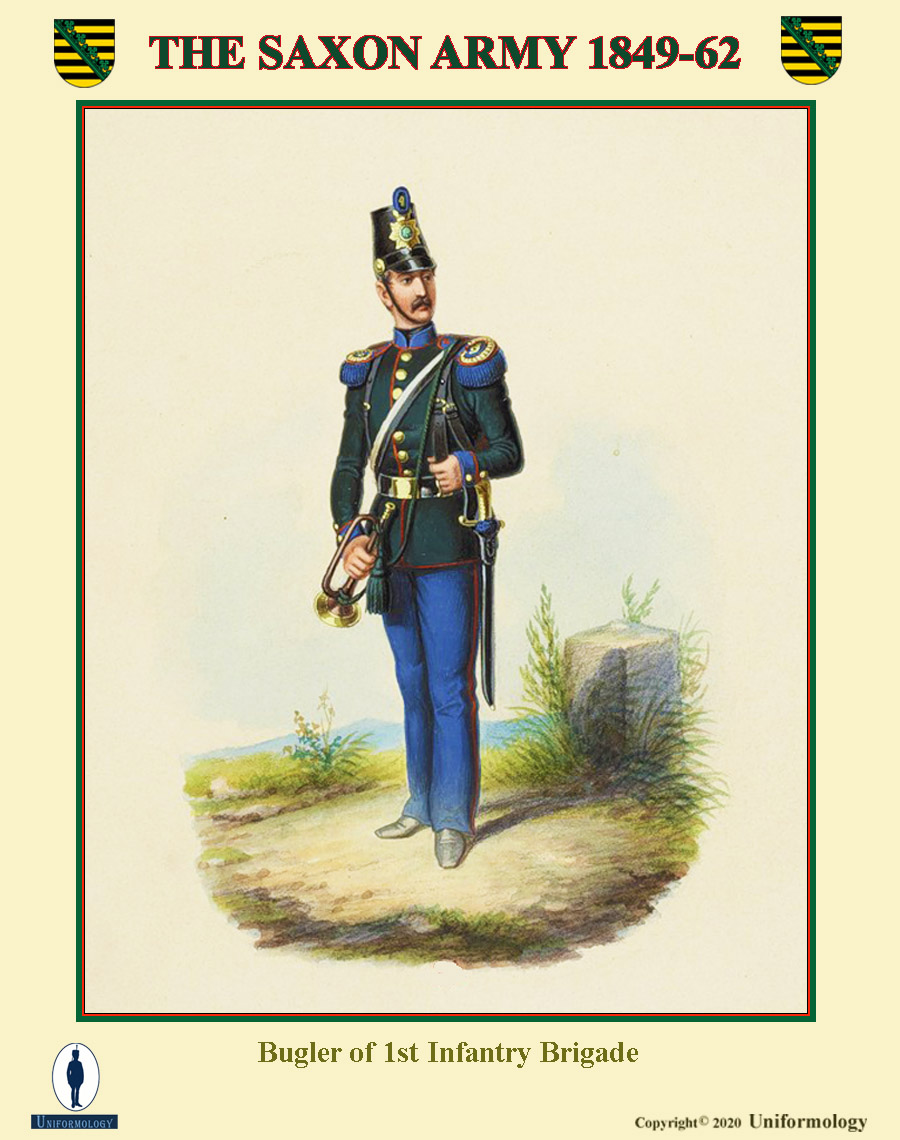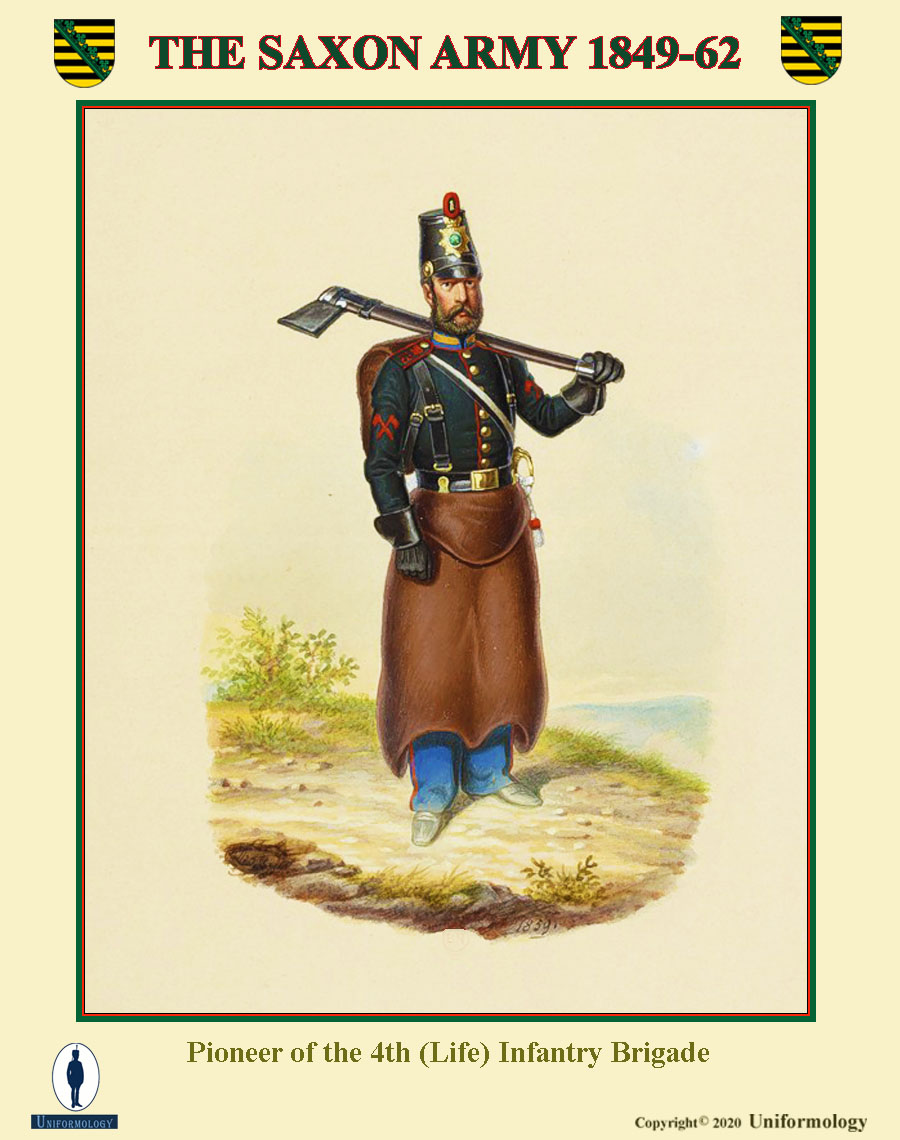THE WORLD OF MILITARY UNIFORMS
1660-1914
THE ARMY OF SAXONY
1859
The Army of the Kingdom of Saxony 1859
Saxony, which had been an Electorate of the Holy Roman Empire since 1356 became a Kingdom upon that Empire's demise in 1806. It became a state by the the unification of the German Empire in 1871, but retained it's status as a Kingdom until 1918.
From the early 18th Century, Saxony had been an important military power. It took part in the Great Northern War (1700-1720) and the wars involved with it becoming the Kingdom of Poland-Saxony under Augustus III until 1763. It fought in the wars of revolution in from 1792 and Joined the Confederation of the Rhine after 1806. After the defeat of Napoleon at Leipzig in 1813 it changed sides.
Following the Napoleonic Wars it enjoyed the long peace from 1820 to1860 It's army was the third largest of the German armies after Prussia and Bavaria.
The infantry arm had worn predominately white uniforms (except for the Guards) since 1754. In 1832 they adopted green jackets with light blue collars and cuffs along with the trousers. The piping was red. Shoulder straps were at first red for the Lieb Regiment, light blue for the 1st Regiment, white for the 2nd and green for the 3rd. These were changed to green in 1842 with the regimental colour on the pompon In 1849, the infantry was organized into four brigades each of 4 battalions. At the same time, tunics were taken into wear with the same distinctions. The light Infantry wore green tunics with black facings piped red and dark grey trousers. Tapered shakos with star plates were worn with green pompons. This uniform would be worn almost unaltered until 1862.
In 1832 the Cavalry arm consisted of three regiments. Their previous white coats were replaced by cornflower blue, retaining trousers of the same colour with a white stripe. Black leather helmets were worn with black fur crests. In 1840 only two regiments remained, but another was raised in 1849. In the same year the coatees were replaced by tunics and the helmets lost their crests. The Leib regiment had white collars and cuffs and the 2nd crimson. The new regiment had orange, later yellow facings.
The Artillery arm had worn dark green coats since 1717. From 1821, the field artillery followed the style of the infantry with red collars and cuffs. In 1843, the horse artillery wore crested leather helmets (more rounded than those of the cavalry. The Pioneer Battalion had the same uniform as the foot artillery with white metal buttons. The Train regiment wore light blue tunics with black facings piped red
NEXT PAGE: THE JÄGERS


